it’s old, go slowly
by Rach
Yangmei, China

Founded during the Song Dynasty (960-1279 AD), the town of Yangmei burgeoned during the Ming Dynasty (1368-1644 AD) and reached its heyday during the Qing Dynasty (1636-1912 AD), when it became a major port on the Yongjiang River.
Today Yangmei, which covers an area of 6.5 square kilometers, is studded with well-preserved old buildings dating back through the dynasties, and boasts beautiful scenery from the river to banana plantations.
In this ancient town we meet a 100-year-old lady, who lives in a 400-year-old house. In fact, the town is full of old people, who look like they have been here all along. It seems that time has stood still.
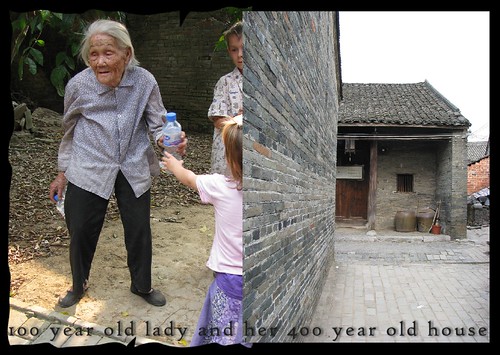
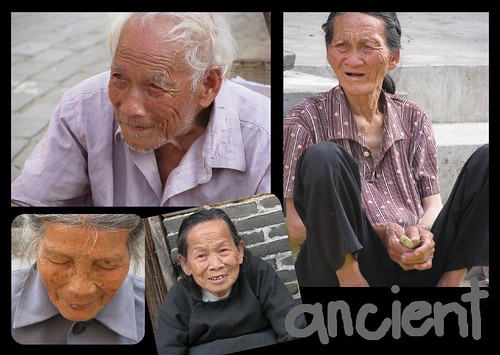
The town is in the process of being restored, and to that end there are piles of rubble and building materials, men mixing concrete and oxen dragging carts of bricks about. For the past four hundred years, all new buildings erected have been constructed in the same Qing dynasty style; it is not difficult to find carved wooden eaves, fancy windows, murals and carved gables, all of which lend a craftsmanish air to the place.
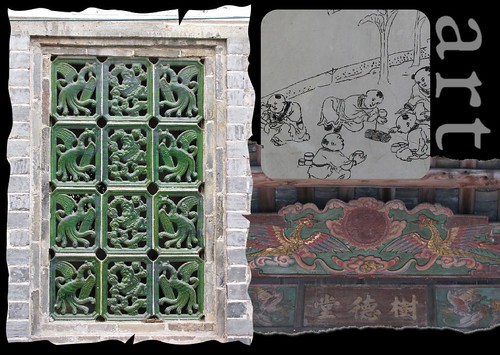
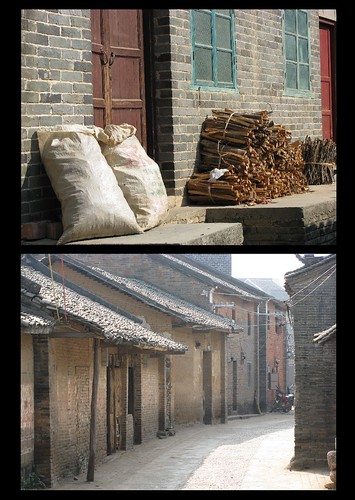
Although the town has become a tourist attraction, the 5,300 townspeople just continue their lives exactly as their ancestors have done since the town’s founding (although now there is electricity and a few street lights, which are turned on one by one each evening, and water is currently being piped to some of the houses). Women and children carry laundry and dishes to the river for washing, ladies collect animal droppings to add to compost piles, bananas are cultivated, vegetables are famously fermented, fish caught and cooked, men sit around playing chess…..perhaps the only two concessions to tourism are the oxcart rides and souvenirs made by hand to sell.
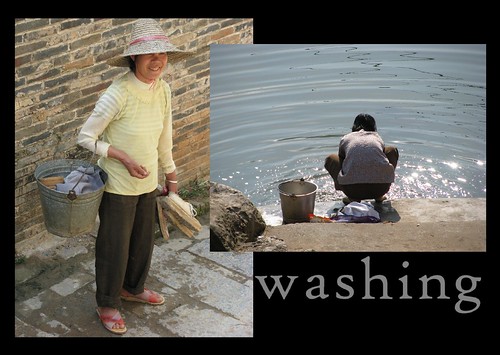



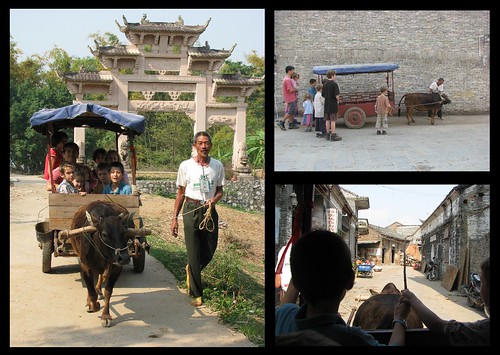
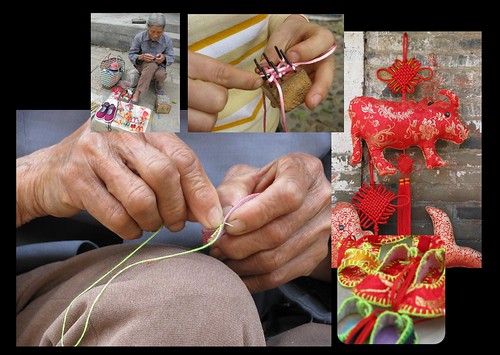
Grey stone buildings hug little paved lanes, doorways open into courtyards, revealing daily life. Around every corner is a new ancient sight. Maybe a stooped old lady will be stumbling by, maybe a young man will be leading an ox, perhaps a child with the Chinese back-split-pants will be toddling along, perhaps a toothless grin will be flashed at you. This truly is a great place to grasp the spirit of China’s long history.
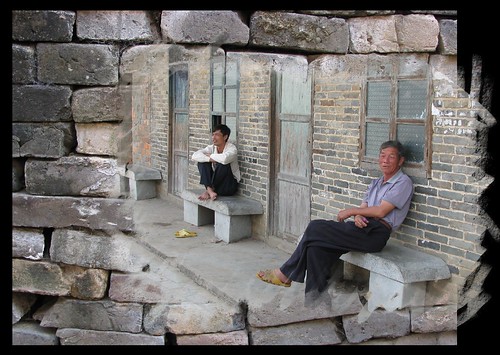
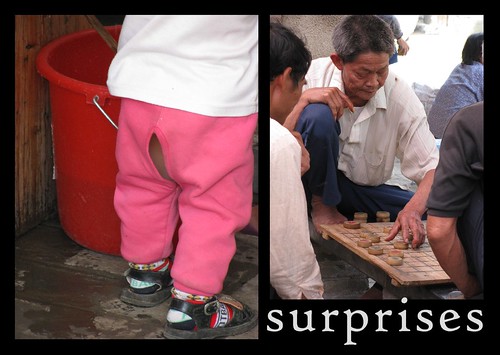
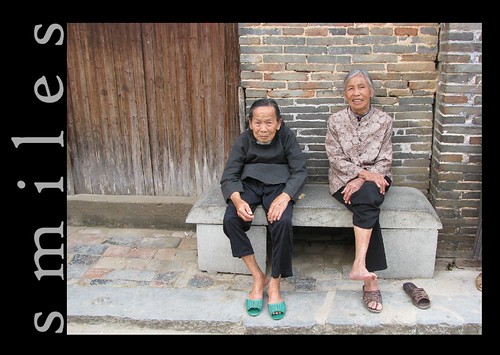
Two days was not too long to spend here exploring, wandering, looking, connecting. We walked most of the town and didn’t see another white face – in fact, judging by the amazing welcome we received (we were given more than 100 bananas the first day!), we suspect not too many foreigners come here, although there was a large contingent of Chinese tourists, who bussed in for the day and out again before nightfall. Perhaps even fewer tourists sit down and shell peanuts with two old ladies at the side of the street – we were pleased to have allowed the time to do this….and to look for the frogs we could hear croaking in the pond and watch the bats flying about as darkness descended and watch the last rays of sunlight and and and……
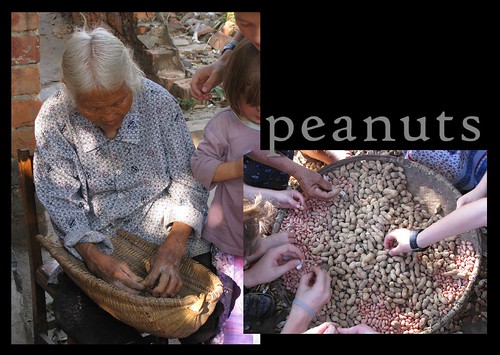
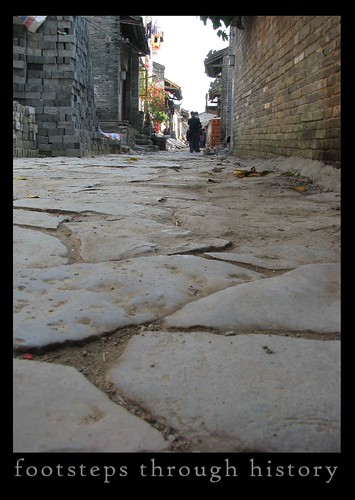
And if that’s not enough photos, here’s our Yangmei Album – the photos are much clearer than the ones we adulterate with the Collage Creator, but still not as crisp as with the good, but now dead-and-sitting-with-the-insurance-company-in-NZ camera! Also, the air here is very hazy, which, unfortunately does not make for great pics.
Details for anyone wanting to visit:
Nearest big place: Nanning – go to the Bei Da bus station and ask for Yangmei. You’ll be put on a bus!
When you arrive, you’ll hop off the bus in the main “square” inside the town gates. There’s a very faded map under a roof. Find this. Behind it, under the same roof, are some stone seats – go down the road past these seats. Don’t worry about looking at the Revolutionary house for now…..but do take note of the public toilets on your left. You might need them later. Keep going until you see another gate ahead of you. The river is just beyond it. In front are some stairs, but don’t go down them (actually, to be pedantic, you need to go down the first step!) To your right is a building with big wooden doors, probably open. Here you can find a room to stay (40 yuan for a double, 50 for two double beds – no mattresses), hot shower, squat toilet, and the hosts will cook you for a nominal charge whatever you manage to ask/sign-language for. No English spoken, but big smiles.
To return, wander up to the bus stop in the morning (we were there about 11) and the bus seems to leave when fairly full. We returned home by a different route and were dropped off a short walk from the train station/our hotel. Luck of the draw I think. Last bus is at 4:30. We tried to catch a boat back, but all we managed was the offer of a river cruise – you might like to do this!
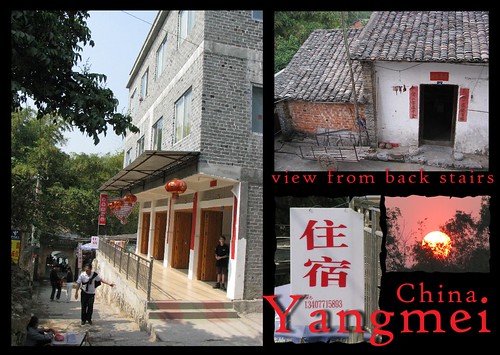
Tags: craft, food, history, housing, postcard: China, souvenir, tradition, transport




Wow, the workmanship in those buildings and paths is so detailed……along with those faces. They have done well to preserve their culture. Oh, and I love those pink ‘surprises’!!